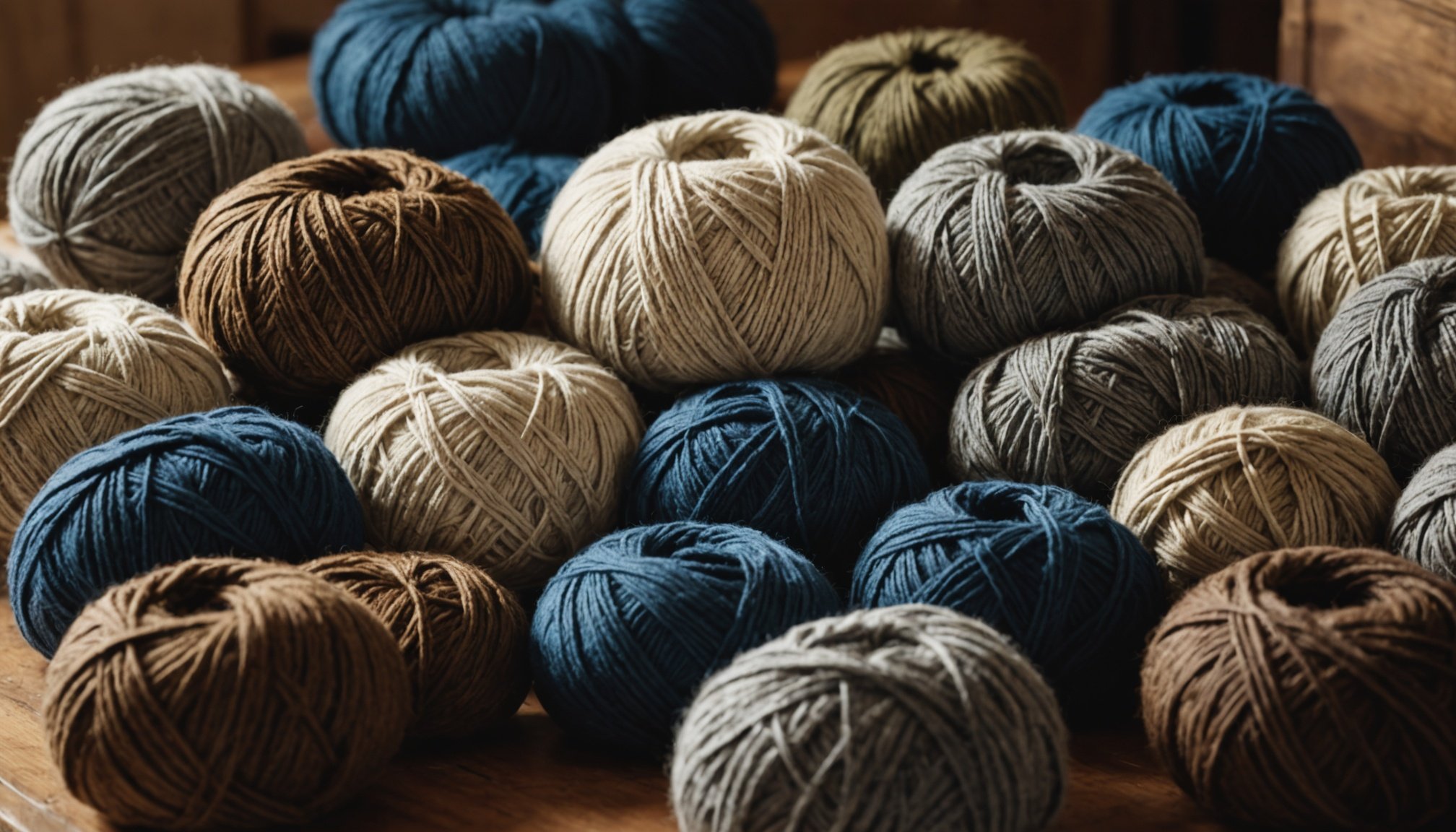Overview of Wool Clothing Care
Understanding wool care basics is vital to maintaining the longevity and appearance of your wool garments. Proper care preserves the unique qualities of wool, such as its natural elasticity and warmth. Misinformation may lead some to believe that wool care is overly complicated, but understanding the fundamentals can dispel these myths.
Firstly, it’s crucial to recognize that wool is a diverse material, with each type having distinct characteristics. Merino wool, for example, is known for its softness and is naturally resistant to odours, making it ideal for clothing worn close to the skin. Cashmere wool is exceptionally soft and requires a gentle touch to maintain its luxurious feel. In contrast, Shetland wool is more robust and durable, often used for outerwear.
Topic to read : Top Winter Fabrics to Soothe Allergy-Sensitive Skin in the UK
To ensure your wool garments last, avoid common pitfalls such as excessive washing. Wool possesses self-cleaning properties, often requiring only occasional airing or spot cleaning. Additionally, myths such as using high heat for drying should be avoided. Instead, always air dry flat to prevent shrinking.
By adhering to these wool care basics, you can extend the lifespan of your wool clothing, allowing it to continue to provide warmth and comfort season after season.
Washing Techniques for Wool Clothing
Wool garments require special care to maintain their quality and longevity. Proper washing techniques can ensure that your wool items stay in excellent condition.
Hand Washing Wool
Hand washing wool is often recommended for its delicate and gentle approach. Start by filling a basin with lukewarm water, around 30°C, and add a wool-specific or mild detergent. Submerge the wool garment and gently agitate the fabric without wringing or twisting. Let it soak for no longer than 10 minutes to prevent fibre damage. Rinse thoroughly with cool water to remove detergent residues, then dry flat to prevent stretching. Hand washing wool garments offers the benefit of close control over the process, minimising the risk of shrinkage or distortion.
Machine Washing Wool
If you prefer machine washing, choose a gentle cycle specifically for wool or delicates. Use a wool-specific detergent and set the temperature to cold or no higher than 30°C. It’s crucial to avoid spin cycles that might damage the fibers. Ensure the machine is not overloaded, allowing water to circulate freely around the wool garments. While convenient, machine washing wool can pose risks of shrinkage or shape loss, so careful attention to settings is essential. Comparing both methods, hand washing is safer but more time-intensive, whereas machine washing is quicker but requires precision.
Drying Methods for Wool
When it comes to drying wool clothes, adopting the right techniques is crucial for maintaining their quality.
Natural Drying Techniques
Air drying wool items is recommended due to their delicate nature. Wool is a fabric that can easily be damaged by heat, so avoiding methods like tumble drying is essential. Lay wool items flat on a towel or drying rack, ensuring they are reshaped to prevent misshaping. It’s important not to hang them up, which can also lead to stretching.
Avoiding Shrinkage and Damage
To minimize shrinkage, check the care labels, which often include specific drying instructions. Follow these guidelines carefully. Look out for any signs of damage such as stretched fibres, which could indicate improper drying techniques. Utilize these methods as preventative measures to keep your wool clothes intact and long-lasting.
Stain Removal Techniques for Wool
Removing stains from wool can seem daunting, but with the right techniques, it can be manageable. Common stains, such as wine, coffee, or grease, each require specific treatments. For instance, tackling wine stains involves blotting the excess liquid and dabbing the area with a solution of water and vinegar. Grease stains, on the other hand, are best treated by sprinkling the area with cornflour to absorb the oil before gently brushing it away.
When considering DIY solutions versus commercial products, it’s essential to weigh their effectiveness and potential risks. DIY remedies, like using lemon juice or baking soda, are often more cost-effective and eco-friendly, yet they can be harsh if not used properly. Conversely, commercial products are specifically formulated for wool but might be pricier.
Precautionary measures are vital to safeguarding wool’s delicate fibers. Always test any solution on a hidden area first and avoid scrubbing the stain, as this can cause damage. Instead, dab gently and support the fabric underneath to prevent stretching. By understanding and applying these stain removal techniques, maintaining your wool garments’ pristine condition is entirely feasible.
Storing Wool Clothing
When it comes to storing wool garments, adopting proper methods ensures their longevity and maintains their pristine condition. Wool is a natural, luxurious fabric that requires specific attention, especially when packing away at the times of seasonal changes.
Best Practices for Storage
For optimal preservation, it’s crucial to focus on the way you fold and pack your wool clothing. Roll garments loosely, ensuring ample space to prevent crushing the fibres. This technique helps maintain the garment’s shape and avoids wrinkling.
The storage environment is equally important. Choose a cool, dry place to store wool garments. Avoid exposing them to direct sunlight, which can cause fibers to fade and weaken over time. Moreover, to combat the perennial issue of moth damage, consider using natural deterrents such as cedar blocks or lavender sachets.
Seasonal Care for Wool
Seasonal storage necessitates a mindful approach. Thoroughly clean your wool clothing before placing them in storage to prevent the development of stains and odors. Additionally, storing each item separately prevents garment tangling. To maintain the quality over time, check periodically for any signs of damage or moth infestation, taking prompt action if necessary.
Troubleshooting Wool Care Issues
Navigating the world of wool care can feel daunting, especially when you’re dealing with common wool care problems like pilling, fuzzing, or shrinking. Fortunately, understanding these issues equips you to tackle them effectively.
Addressing Pilling and Fuzzing
Pilling occurs in wool due to friction and wear, leading to small, unsightly balls of fibre on the surface. Combat these by gently using a de-piller or fabric shaver, a tool you glide over the wool to remove pills without damaging the material. For reducing pilling, consider using a laundry bag to minimize friction during washes.
Product recommendations include lint shavers like the Gleener or Conair, known for their effectiveness and affordability. Regular attention to your wool garments can significantly extend their life and maintain their appearance.
Remedies for Shrinking Wool Clothing
Restoring shrunken wool involves a careful soak in a lukewarm water and conditioner mix, gently stretching the garment back to its original size. To prevent future shrinking, wash wool in cold water and lay flat to dry. For severe cases of shrinkage, seeking professional help from a tailor or dry cleaner is advisable as they possess the expertise to assess and attempt restoration without further damage.
Recommended Products for Wool Care
When it comes to wool care, selecting the right detergents and tools is paramount for maintaining the fabric’s integrity and longevity. Detergents specifically designed for wool are formulated to be gentle, preventing damage to the delicate fibres. These cleaners often include natural ingredients such as lanolin, which conditions wool while effectively removing dirt.
In addition to detergents, several tools and accessories can simplify your wool care routine. Lint rollers and soft bristle brushes help maintain the appearance of wool garments, removing debris and any minor fluff without harming the material. Employing these tools alongside appropriate detergents ensures comprehensive care.
The market presents a plethora of wool care products reviewed favorably by users. One popular product is Eucalan’s wool wash, praised for its no-rinse feature and gentle, eco-friendly formulation. Woolite is another well-regarded detergent, known for its ability to preserve fabric texture and colour vibrancy over time.
For those serious about wool maintenance, investing in these specialised products can make a significant difference. With effective detergents and practical accessories, wool care transforms from a daunting task into a manageable and rewarding routine. Opt for products that align with your wool items’ specific needs for optimal care results.











